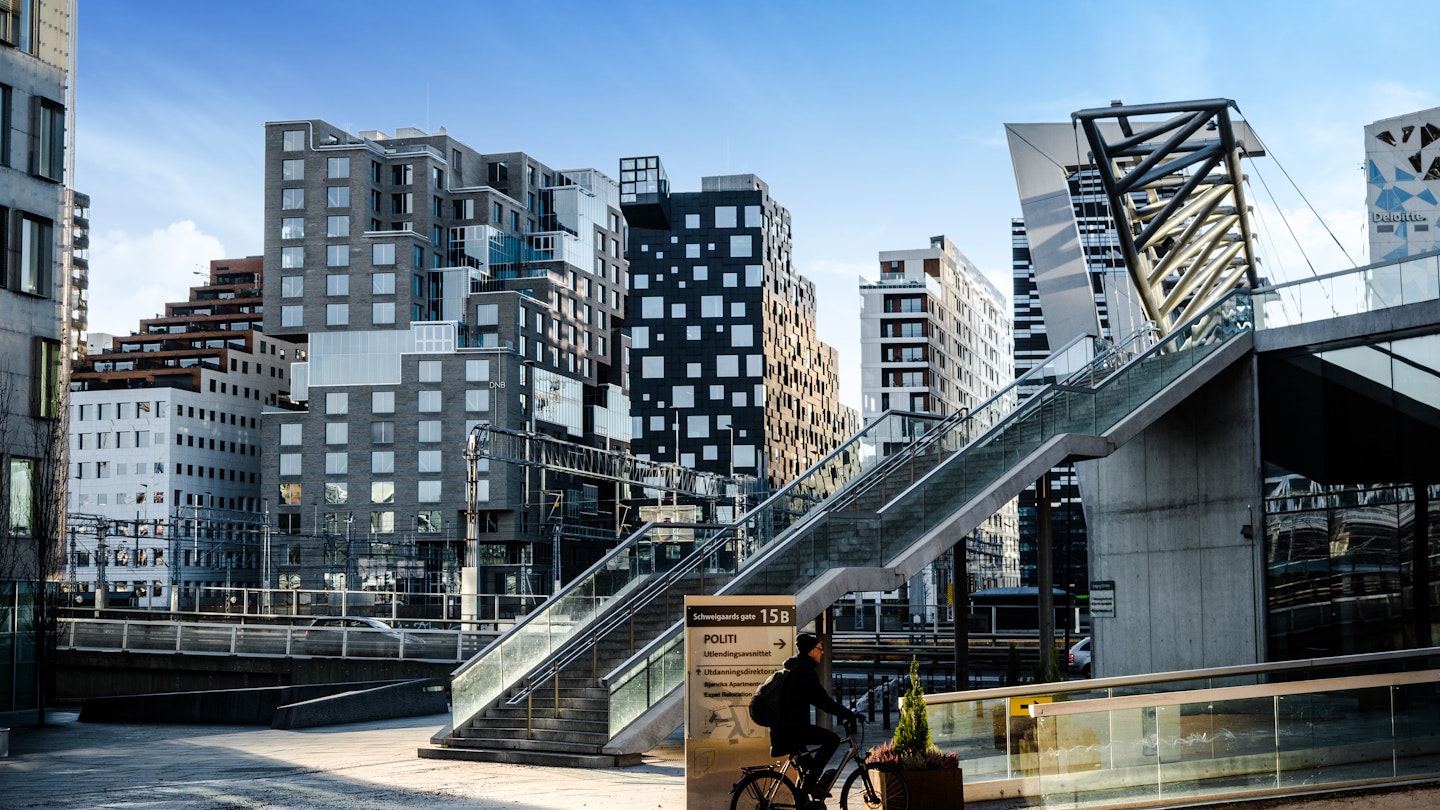Surrounded by pristine nature and bustling with award-winning cultural attractions, Oslo is perfect for a varied city break all year round.
Norway’s capital has undergone a major transformation in recent decades, offering an abundance of experiences. The harborfront has been completely reimagined to prioritize recreation and relaxation. Today, visitors can explore world-class cultural institutions, striking modern architecture, and plentiful opportunities for swimming, cycling, and walking.
Two much-anticipated museums— the National Museum and Munch— have opened in recent years. Additionally, the Museum of the Viking Age is set to open in 2027, showcasing 1,000-year-old artifacts from the Vikingskipshuset (now closed).
Here are 10 of the best activities to add to your Oslo itinerary.
1. Uncover Centuries of Art at the National Museum

Don’t be deceived by the understated exterior of Norway’s National Museum; inside reveals a treasure trove of art and design spanning millennia. The permanent collection features over 6,500 objects and artworks showcased across 86 rooms. The exhibits on the ground floor delve into design within major societal contexts, prompting thought-provoking questions such as, “Can machines create beautiful things?”
Moving to the upper floor, discover works by renowned Norwegian and international artists from 1500 to the present. Notable pieces include Edvard Munch’s vibrant version of The Scream, alongside works by famous names such as Monet and van Gogh.
Planning tip: The National Museum app offers audio and video guides for selected artworks, including content tailored for children.
2. Saunter onto the Roof of the Oslo Opera House

The Oslo Opera House, home to the Norwegian National Opera and Ballet, is where the city’s transformation into a Nordic cultural capital began. Since 2008, this stunning white marble structure designed by Snøhetta resembles a glacier rising from the fjord.
While state-of-the-art performance spaces reside inside, the building encourages public interaction by allowing visitors to walk along its sloped roof for panoramic harbor views. For a more peaceful experience, visit later in the day to watch the sunset over the fjord.
Planning tip: Be cautious, as the marble can be slippery when wet.
3. Emulate Gustav Vigeland’s Sculptures in Vigelandsparken

Vigelandsparken, a monumental sculpture park encompassing over 200 expressive pieces by the prolific Norwegian sculptor Gustav Vigeland, took 40 years to complete. This free-access outdoor gallery is integrated into the lush Frogner Park, located in Oslo’s affluent west side.
Vigeland explored complex human emotions, depicted in his works ranging from joy to grief. Among the highlights is the famous Sinnataggen (The Angry Boy) and the impressive centerpiece, the Monolith, a towering granite sculpture featuring 121 entwined figures.
4. Visit Deichman Bjørvika, a Library Like No Other
The Deichman Bjørvika library is a remarkable departure from traditional libraries. Voted Public Library of the Year in 2021, this six-floor, art-filled establishment offers an inviting atmosphere where visitors can engage in various activities, from enjoying local teen performances to exploring artistic installations.
Designed by architects Lundhagem and Atelier Oslo, the building features cantilevered upper floors, maximizing its footprint while blending seamlessly with its surroundings. The interiors are illuminated by three grand skylights, creating a vibrant space for socializing, creating, and enjoying cinematic experiences.
5. Delve into the Works of Edvard Munch

The Munch Museum, which opened in 2021, stands as a testament to Norway’s most famous artist. Displaying Munch’s collection of paintings, prints, and sketches, the museum addresses recurring themes of sickness, melancholy, and nature. Among its treasures are three versions of Skrik (The Scream), rotated at regular intervals to preserve the delicate artworks.
Temporary exhibitions introduce fresh interpretations of Munch’s work, ensuring continual reasons to revisit the museum.
6. Take a Riverside Walk Along the Akerselva
The Akerselva river, stretching 9 km (5.6 miles) from Maridalsvannet reservoir, offers stunning natural beauty enhanced by parks and picturesque bridges. Historically, this river fueled Oslo’s 19th-century textile factories, so walking along its course provides insights into the city’s industrial past.
Start your journey at Grønnland and follow the riverside path upstream, spotting transformed factories now serving as stylish offices and venues. You’ll encounter invigorating waterfalls and art installations, making this stroll an enjoyable exploration.
7. Enjoy a Floating Sauna Experience
The floating saunas along the harborfront draw intrigue from both locals and tourists, inspired by Finnish sauna traditions. Visitors can unwind in wood-paneled rooms heated to 80–95°C (176-200°F) before refreshing themselves with a dip in the fjord.
Planning tip: Swimwear is required in public saunas, and guests should bring two towels—one for seating and one for drying off—along with plenty of water.
8. Shop for Vintage Treasures in Grünerløkka
Grünerløkka, known for its artistic vibe, boasts numerous bars, restaurants, and vintage shops. Here, visitors can find unique pieces that span the decades—be it ’70s disco or ’90s grunge.
A variety of stores encourage treasure hunting, where rummaging often leads to delightful finds. Whether you’re in search of retro apparel or classic Norwegian knitwear, this neighborhood has something exciting for everyone.
9. Hike the Forest Trails of Nordmarka
Oslo’s proximity to expansive forests makes it a unique capital city. Within 40 minutes from the city center, you can reach Nordmarka, an idyllic forest area offering well-marked hiking trails.
After taking the T-bane to Frognerseteren, explore trails winding through lush woods that promise breathtaking scenery and refreshing air. Make sure to pack snacks and water as you prepare for this invigorating outdoor adventure.
10. Go Island-Hopping on the Oslofjord
The Oslofjord may not rival the dramatic fjords of western Norway, yet it possesses its own charm. With various vessels offering delightful tours, the public electric ferries allow visitors to explore the islands at their leisure.
Don’t miss the closest island, Hovedøya, where you can hike forest trails and explore historical ruins. For birdwatchers, Gressholmen is a nature reserve rich in birdlife, and Langøyene features sandy beaches and public art installations.
Planning tip: Pack a picnic to enjoy during your island day, as refreshment options limited to seasonal cafés.
This article reflects the best activities to enjoy in Oslo, ensuring a memorable visit to Norway’s vibrant capital.




